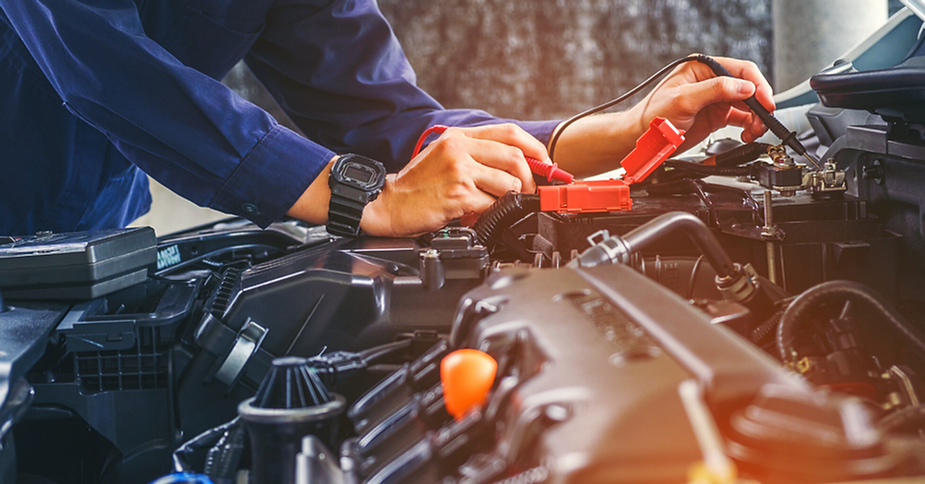We all love our cars. For some of us, they are like our babies. We name them, we take care of them, and have some of the best experiences of our lives in them. From the moment we own them, they become important aspects of our everyday lives, and taking care of them is as intuitive as taking care of ourselves. That being said, cars are complex machines, with every version of each model having its own needs and specific modes of care.
When you buy your first car or upgrade and get a new model, it is important to take the time to understand the condition and needs of your vehicle. As a driver, having this basic knowledge and skills can help you save costs and identify problems early on before they become dangerous and even more costly. This beginner’s guide to car service provides easy tips that focus on three important areas; fluid maintenance, tire servicing, and the cooling system.
Fluid Maintenance
Manuals are important resources that give car owners first-hand information on repair and maintenance. Therefore, the first step is to always create time to read through the manual to acquaint yourself with some mechanical ideas and take a hands-on approach in the servicing process and realize long-term cost benefits by doing so. In this beginners guide, the car manual covers the car fluids such as engines, battery fluid, transmission fluid, brake fluid and power steering fluid.
Engine fluid
The engine fluid is the engine oil. The manual indicates the maximum capacity of the fuel tanks and therefore, you can always check the level of the oil using a dipstick. Check the level of engine oil and water regularly or at certain predefined intervals specified in your manual. The following steps should be followed during the checking process:
Ensure the engine is turned off
Clean the dipstick before dipping it into the fuel tank
Dip the dipstick back
Take it out again and read the fuel level.
Brakes Fluid
Check the reservoir and ensure the indicated minimum and maximum fluid levels are not surpassed – there is no need of removing the lid during the check-up. The minimum-maximum mark is critical such that the brake fluid should always be in between the two points. The dashboard light of your car can help know when the brake fluid levels are lower than required.
Power Steering Fluid
Ensure the power steering fluid reservoir is clear to visibility to enable you to see the fluid level. Use a dipstick if the visibility of the reservoir is not clear.
Transmission Fluid
Locate where the transmission fluid is reserved with the aid of your manual and use a dipstick to check the fluid levels.
Battery Fluid
The car’s battery should always be in good condition. If the battery has signs of corrosion there could be some leaks. In this case, replace the battery carefully ensuring that you do not come into contact with the leaking acid. In case the battery fluid is low, refill it using water and do not discharge it excessively because it may overheat and cause other problems.
Tire Servicing
Purchasing tires with the right specifications
The manufactures always indicate the specifications of the tires and this can also be available in the manual. The specifications range from the size of the tire to pressure, to temperature and standard measures are provided for each aspect to achieve the car’s maximum utility.
Checking the Tire Pressure
Pressure gauges are used to check the amount of tire pressure. If you already have one, proceed with the following steps:
Ensure your tires’ temperatures are low – the best time to measure pressure is during cold hours.
Check the manual to confirm the recommended tire pressure.
Insert the gauge onto the valve.
Fill the pressure while reading on the pressure gauge.
Stop refilling when the desired amount of pressure is reached – this can be the same as the recommended pressure in the manual.
Put back the valve cap.
Changing Tires
Ever experienced a flat tire along the highway during a family excursion? I know it feels frustrating especially if one is unable to change the tires by themselves and the nearest garage is some miles away. Changing tires is imperative and inevitable when the tire leaks due to a puncher. Here is a guideline on how to change the tire:
Have the right tools in place.
Place the car on level ground and apply the right brakes.
You can use wheel chocks by placing them opposite to the wheels you are replacing. If replacing the front tire place it in the rear wheels.
Open the nuts but do not remove them first.
Lift the car using the jack.
Remove the flat tire and replace it with the spare one.
Close the nuts on the spare tire.
Lower the car.
The Cooling System: How to Flush
Take a look at the manual to understand the cooling system and be able to locate each component.
Drain the cooling system via the radiator
Remove the thermostat located at either the upper or lower radiator hose.
Flush out the water until the cooling system is clear.
Reinstall the thermostat and ensure the reservoir is disconnected
When fully drained, refill the cooling system with manufacturer-recommended distilled water.
For easy and quality service maintenance for your car, download the Carhoot App today, you can easily get it on both the Google Play Store and the App Store!




No comment yet, add your voice below!